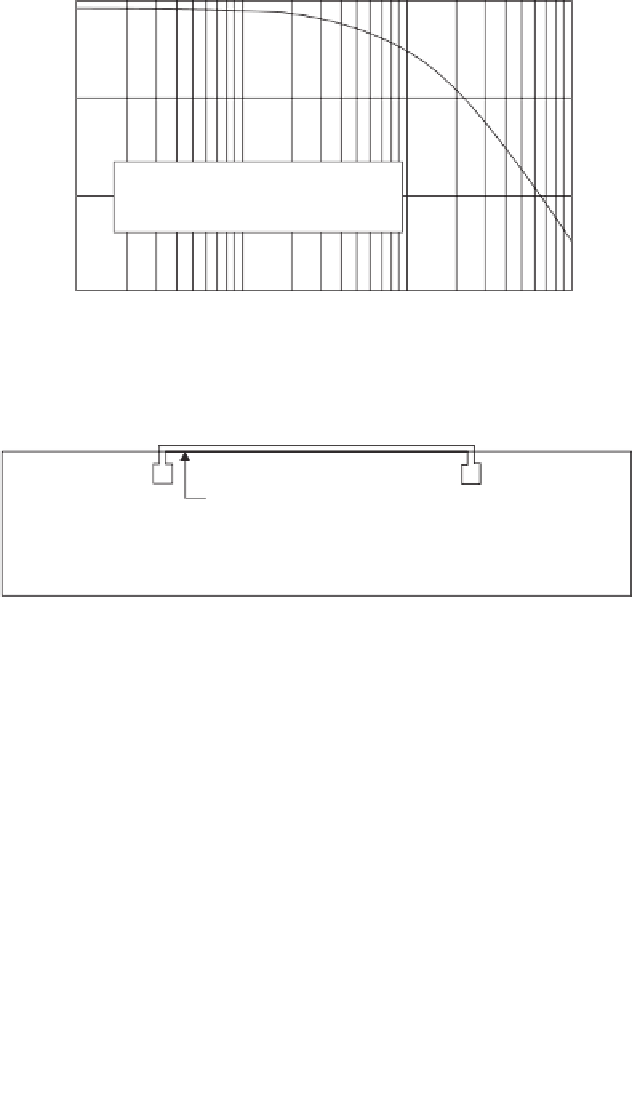Environmental Engineering Reference
In-Depth Information
Figure 16.25
SWCC for Regina clay in terms of volumetric water content and degree of
saturation.
8
×
10
-10
10
-10
6
×
Leong and Rahardjo equation (1997)
k
s
= 7.9
4
×
10
-10
10
−
10
,
a
= 553.5 kPa,
n
= 1.09,
m
= 2.12,
p
= 1.06
×
2
×
10
-10
1
10
100
1000
Matric suction, (
u
a
-
u
w
) (kPa)
Figure 16.26
Estimated permeability function for Regina clay.
Concrete slab
Leak water line
u
w
= 0 kPa
0
2 m
q = 0
u
w
= -888 kPa
u
w
= -888 kPa
q = 0
5 m
2.5 m
7.5 m
5 m
1
q = 0
q = 0
2
u
w
= -12 kPa
0
5
10
15
20
Distance (m)
Figure 16.27
Geometry and boundary conditions for transient seepage analysis.
when the groundwater level rises to ground surface, resulting
in a hydrostatic pore-water pressure distribution. Hydrostatic
conditions present the uppermost limits of possible total
heave.
Figure 16.29 shows the geometry and boundary conditions
for the stress-deformation analysis. A load equal to 5.76 kPa
was applied on the 100-mm-thick concrete slab. This sur-
charge is made up of 180mm of fill with a unit weight of
18.88 kN/m
3
and 100mm of concrete with a unit weight
of 23.6 kN/m
3
. A load of 15 kN/m was applied along the
perimeter beam. The perimeter load includes the weight of
footing and the load of the upper structure. The soil was
free to move in a vertical direction and fixed in the horizon-
tal direction at the left and right sides. The lower boundary
was fixed in both directions. A Young's modulus of 10 GPa
and Poisson's ratio of 0.15 were used for the concrete slab.




























Search WWH ::

Custom Search